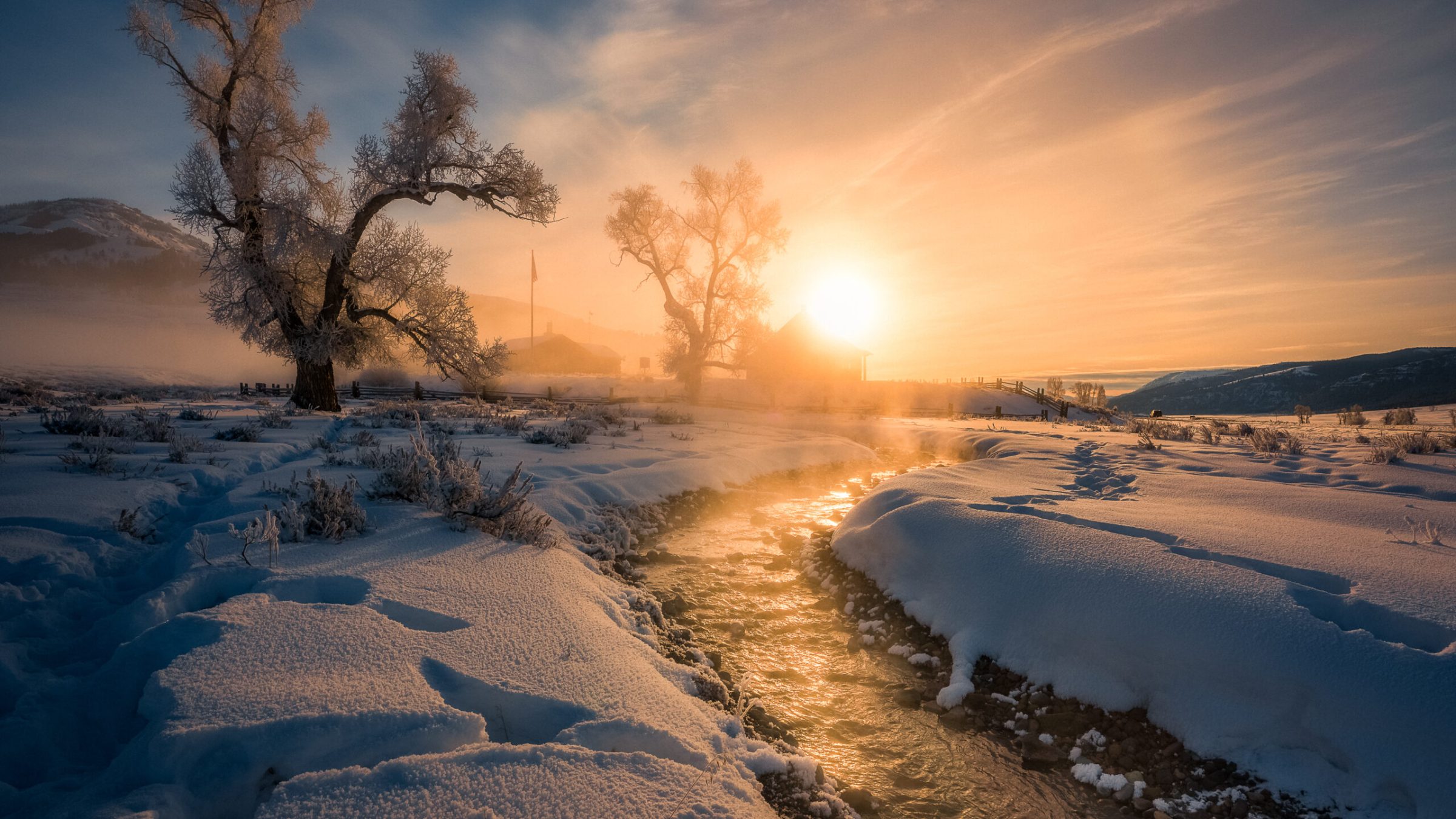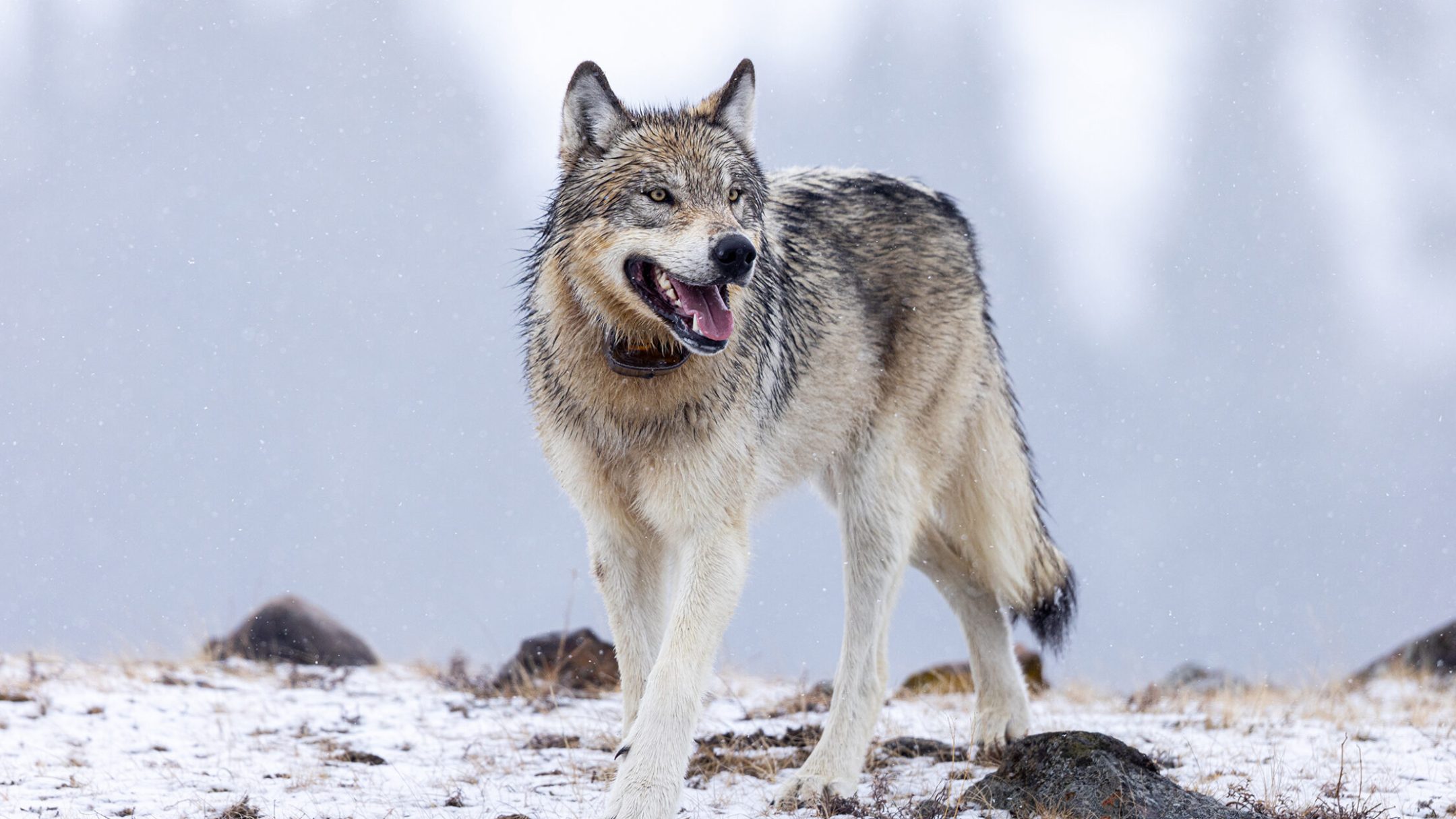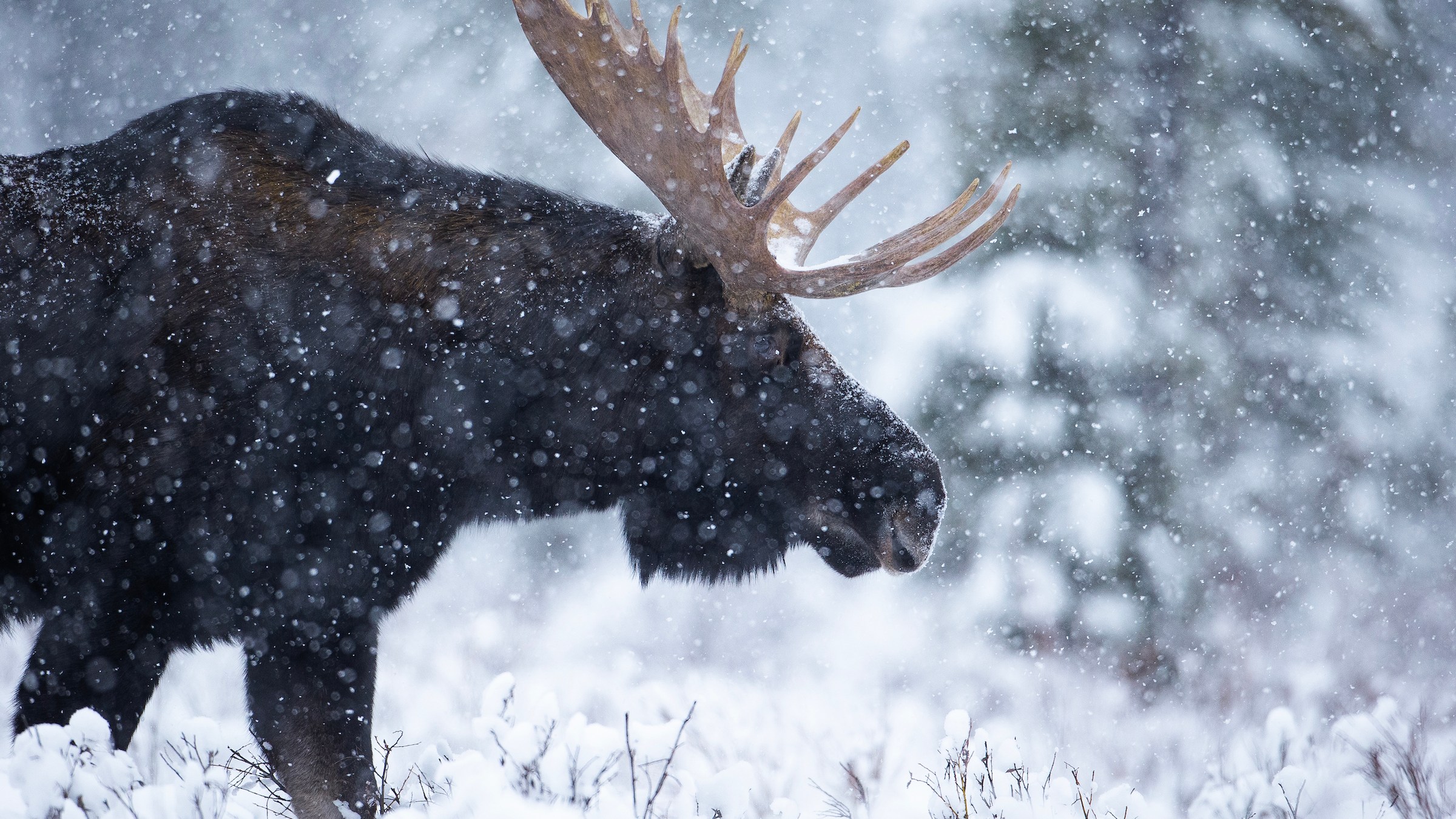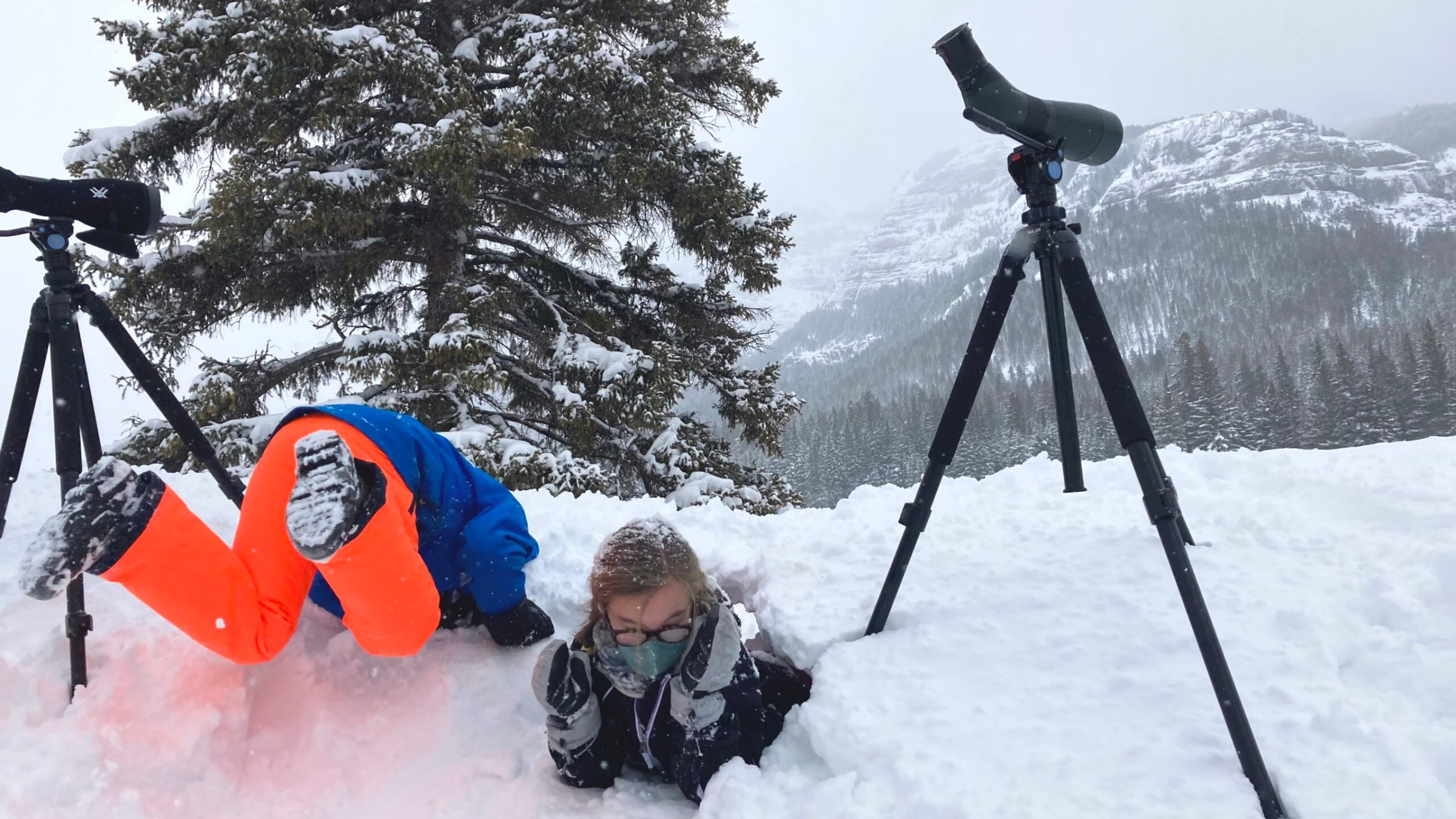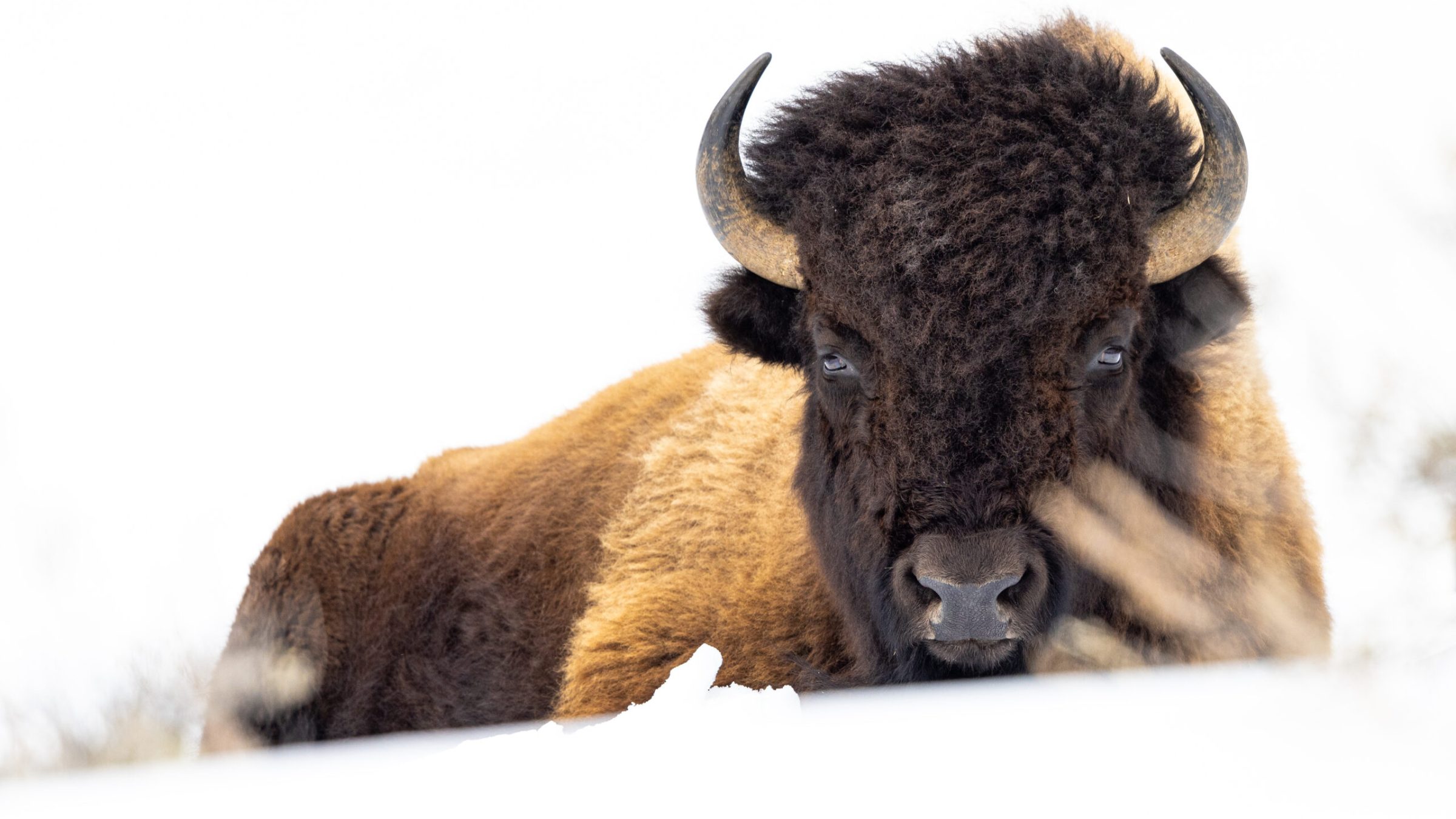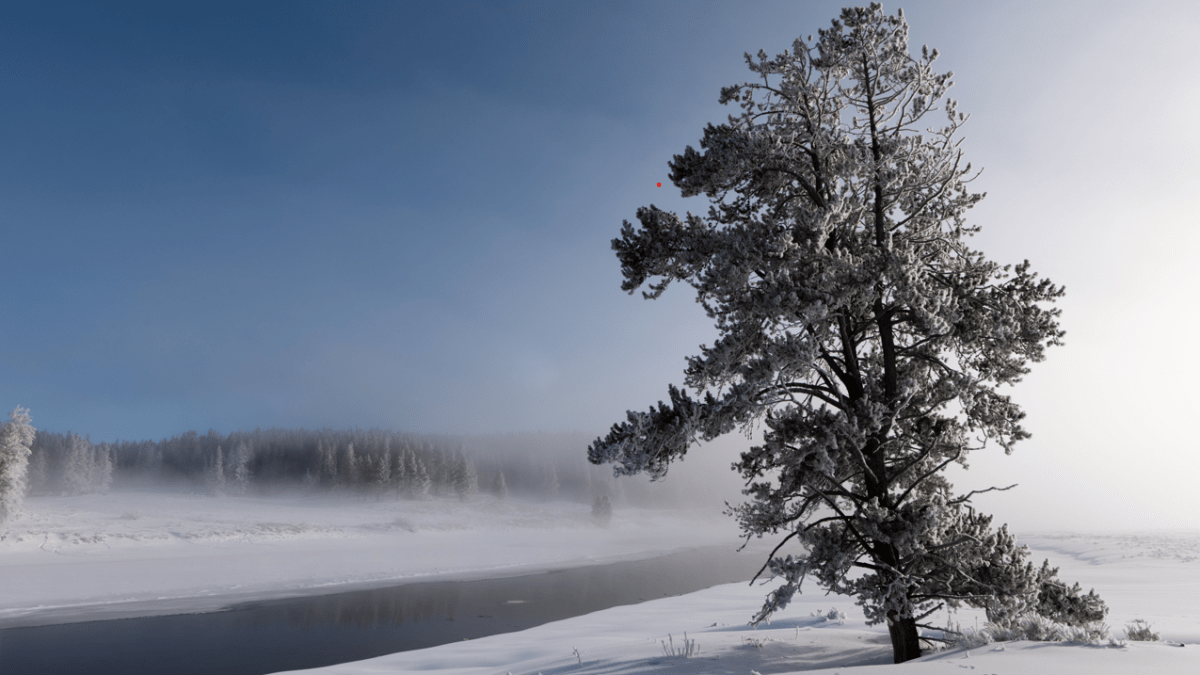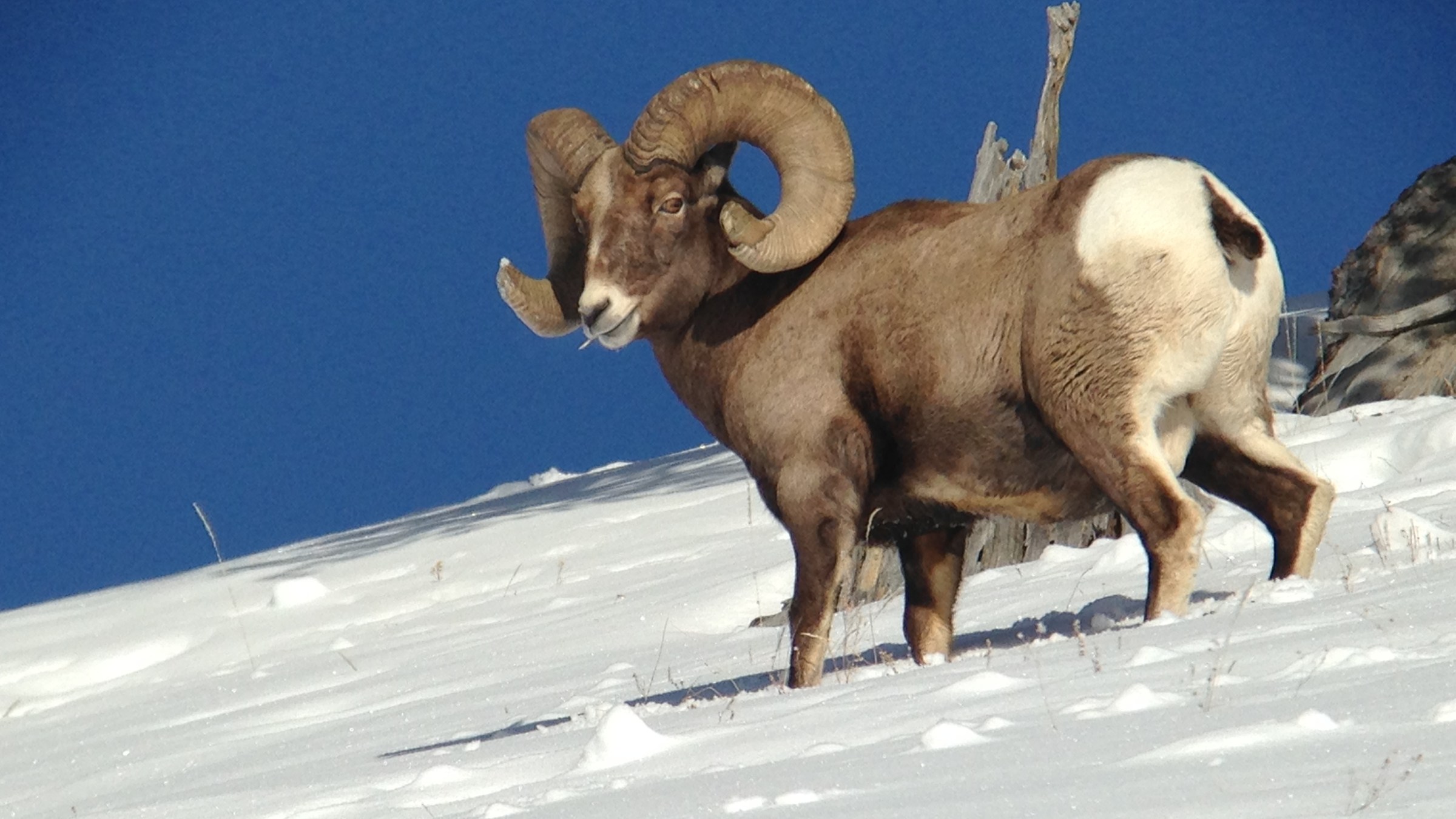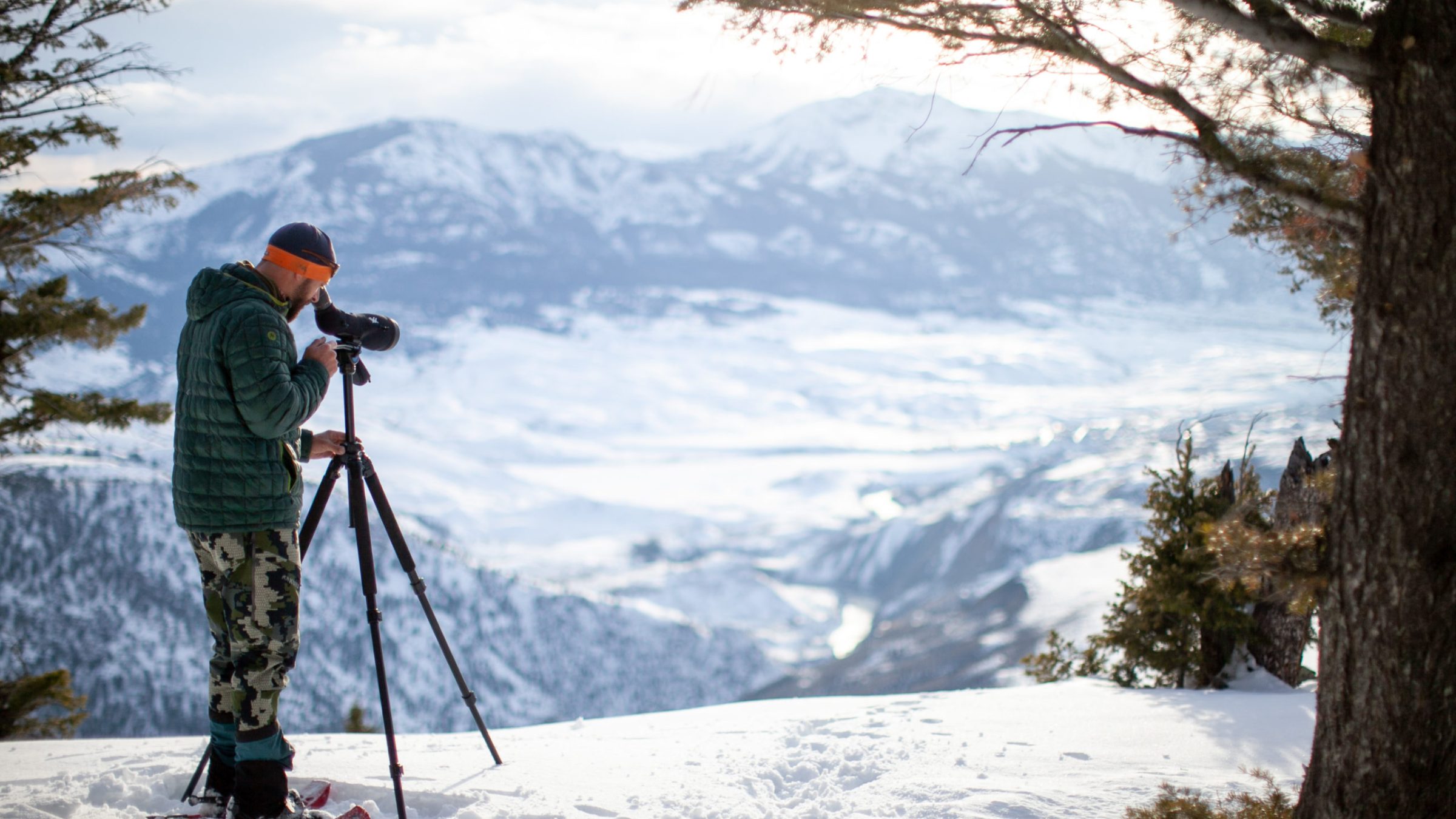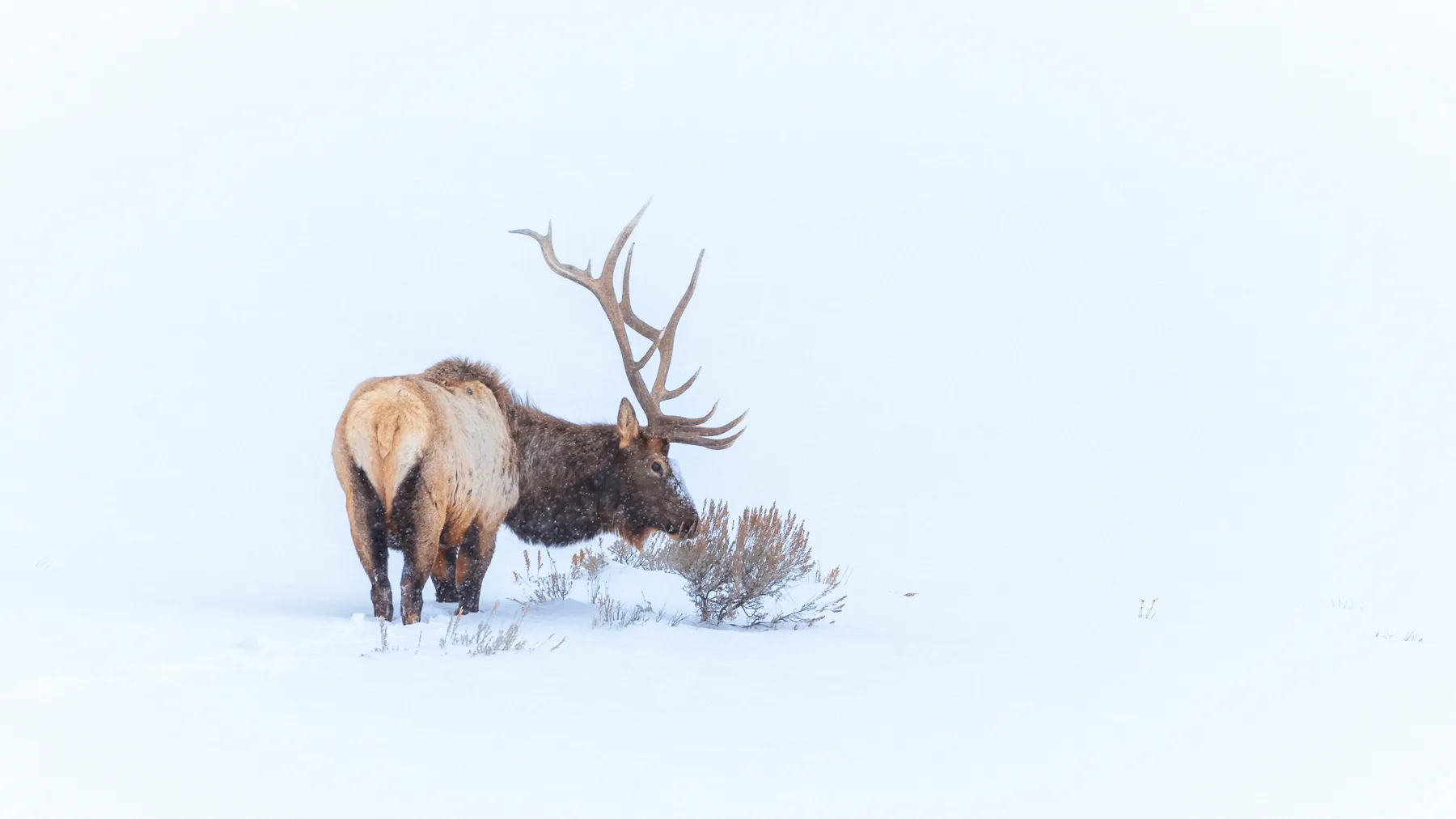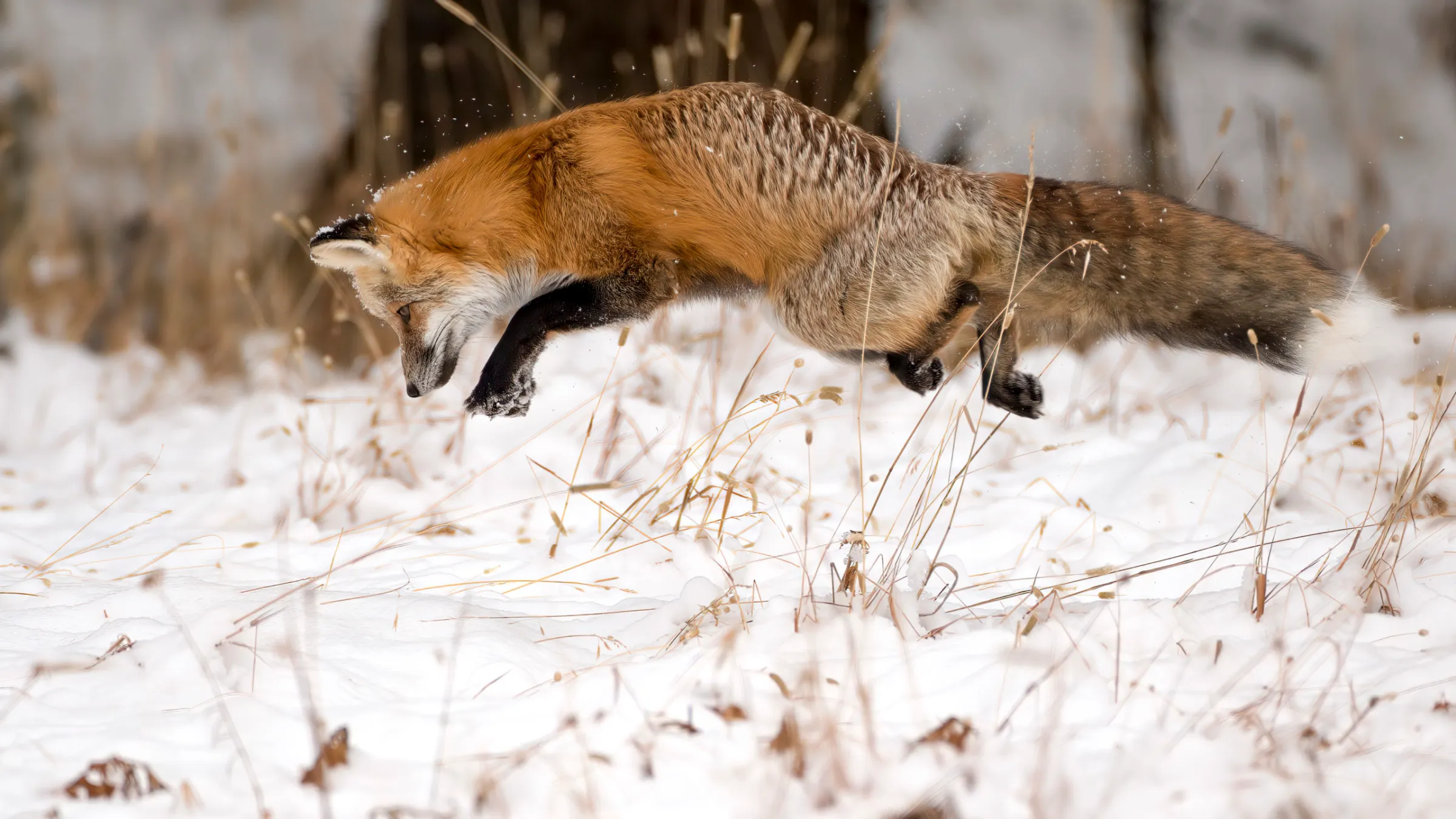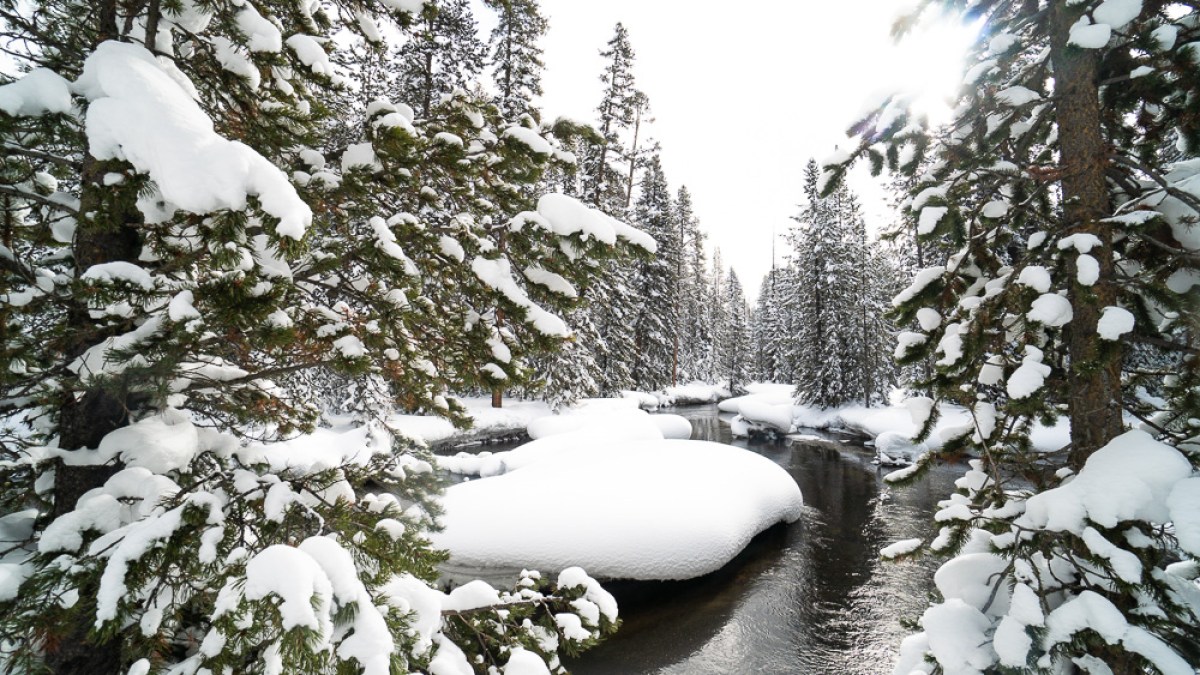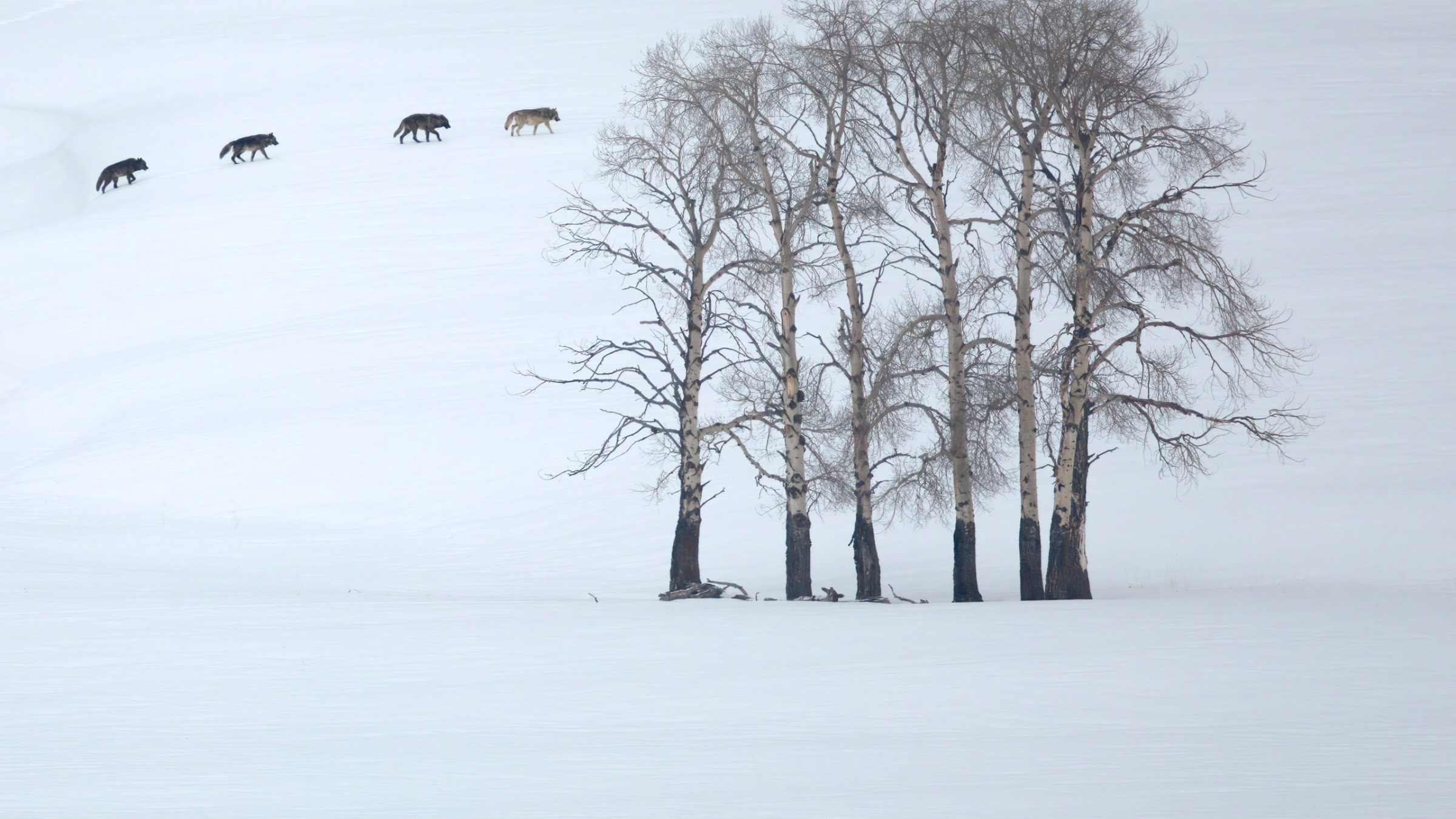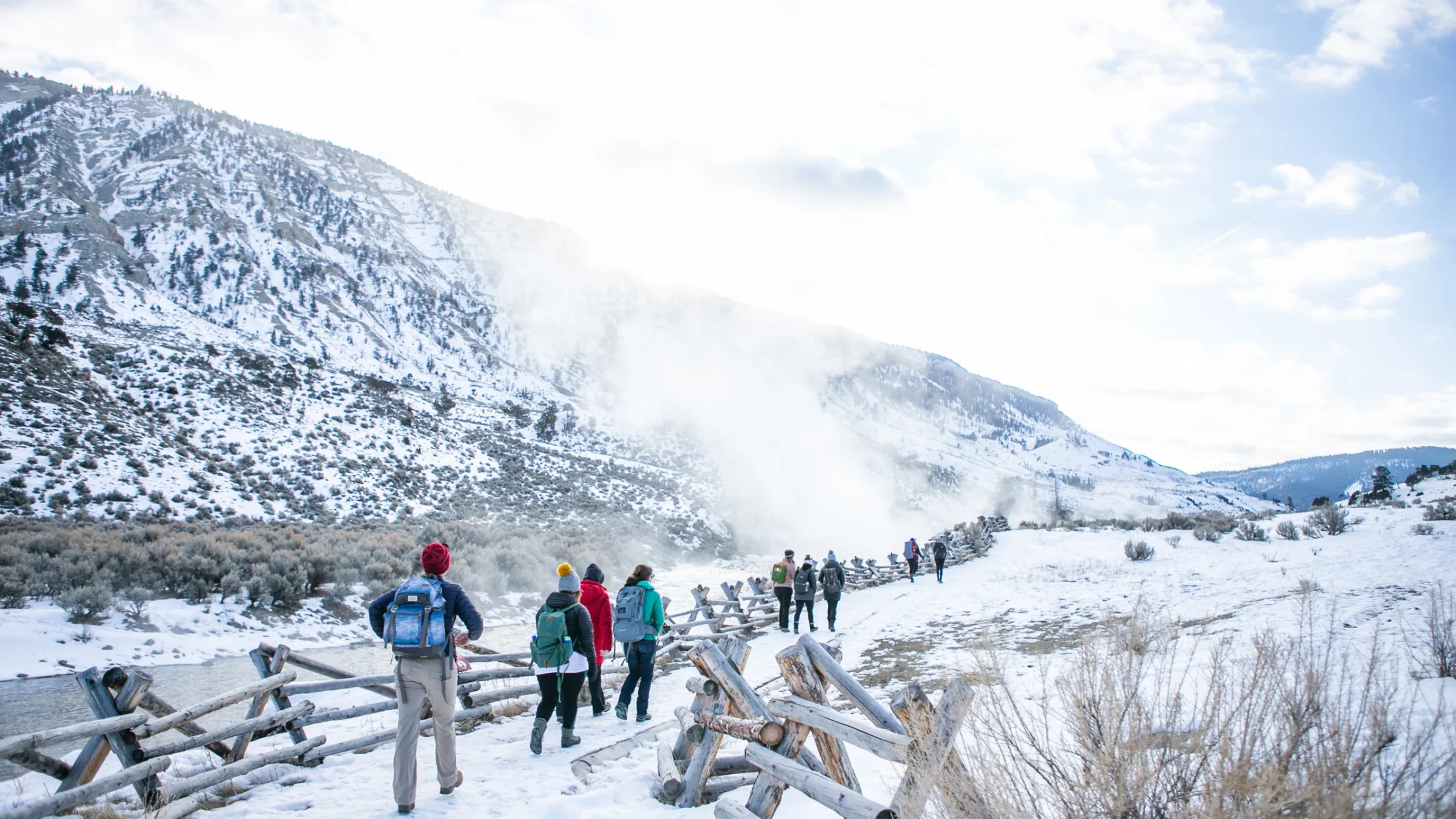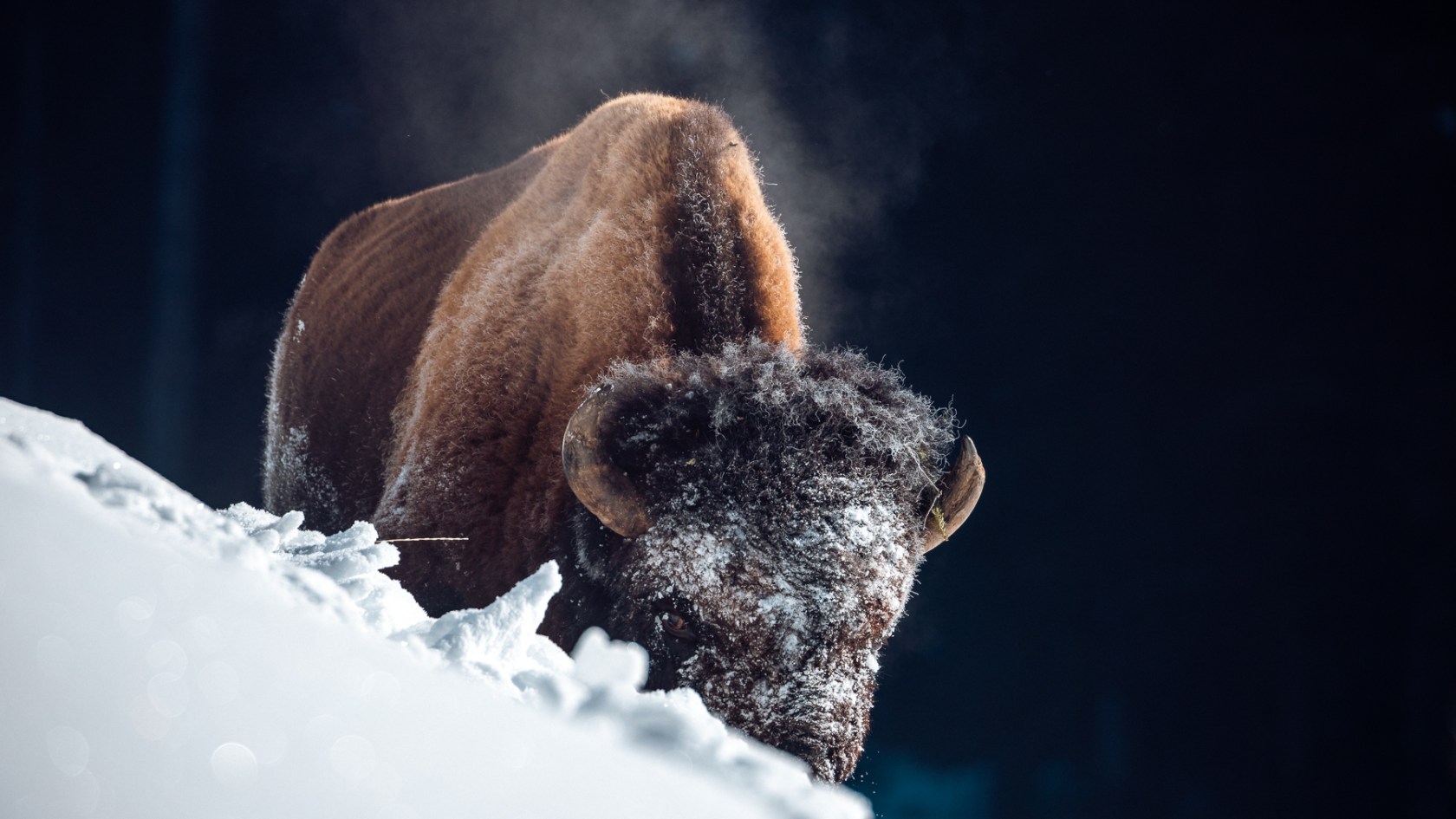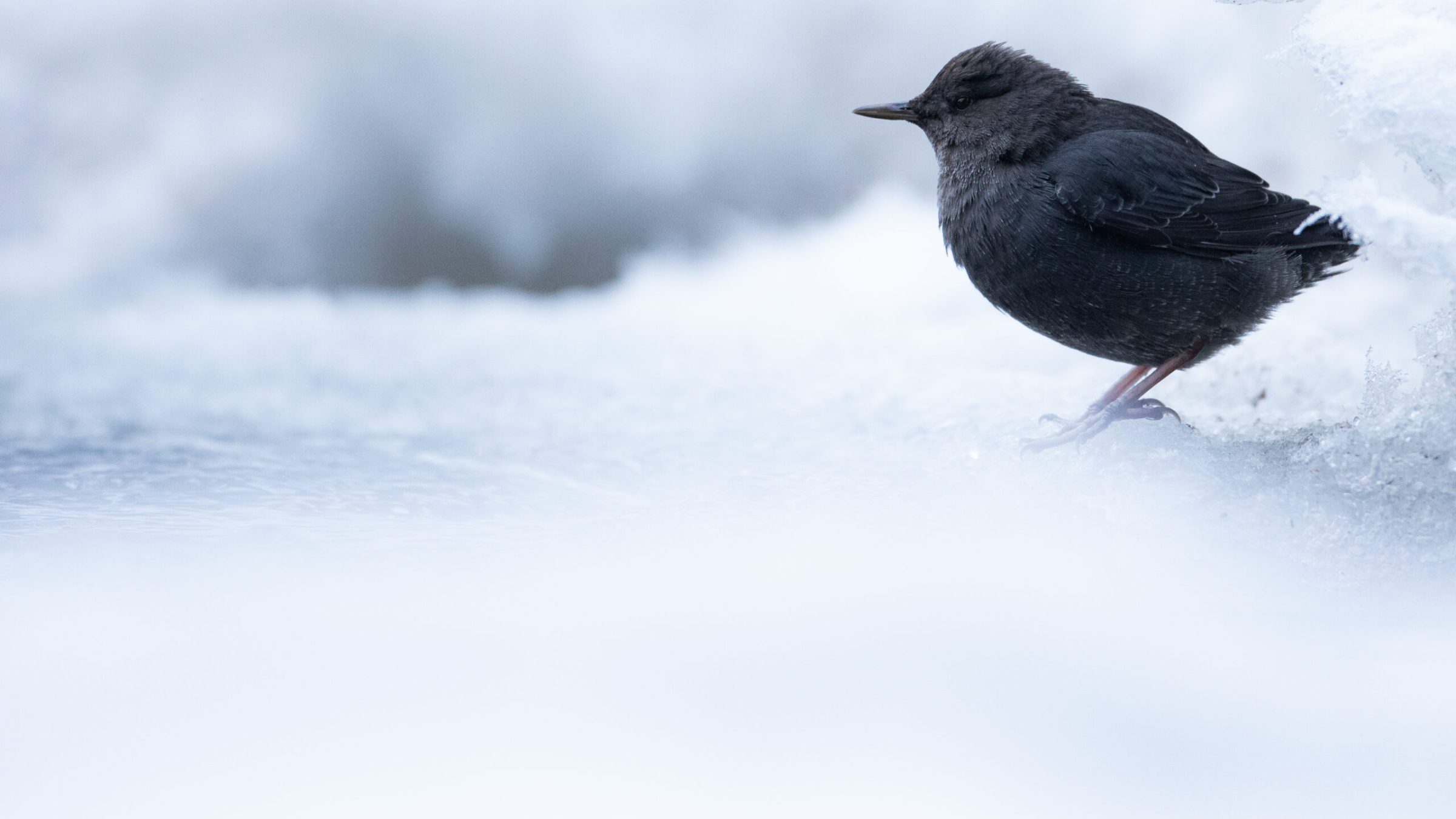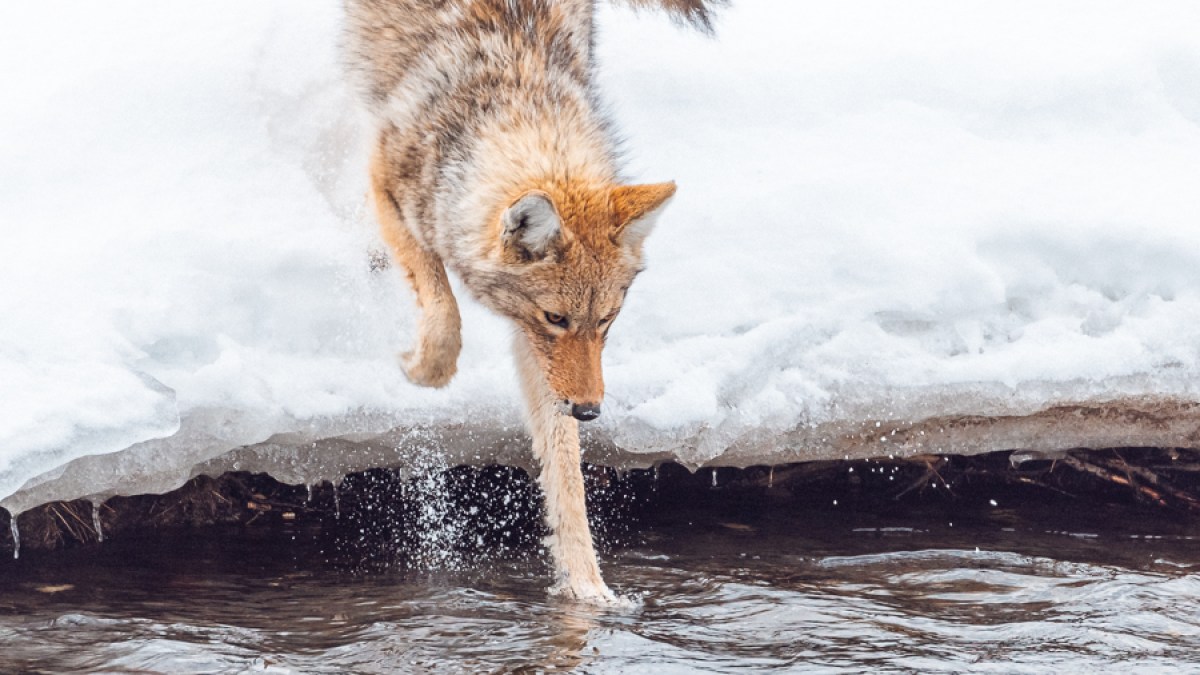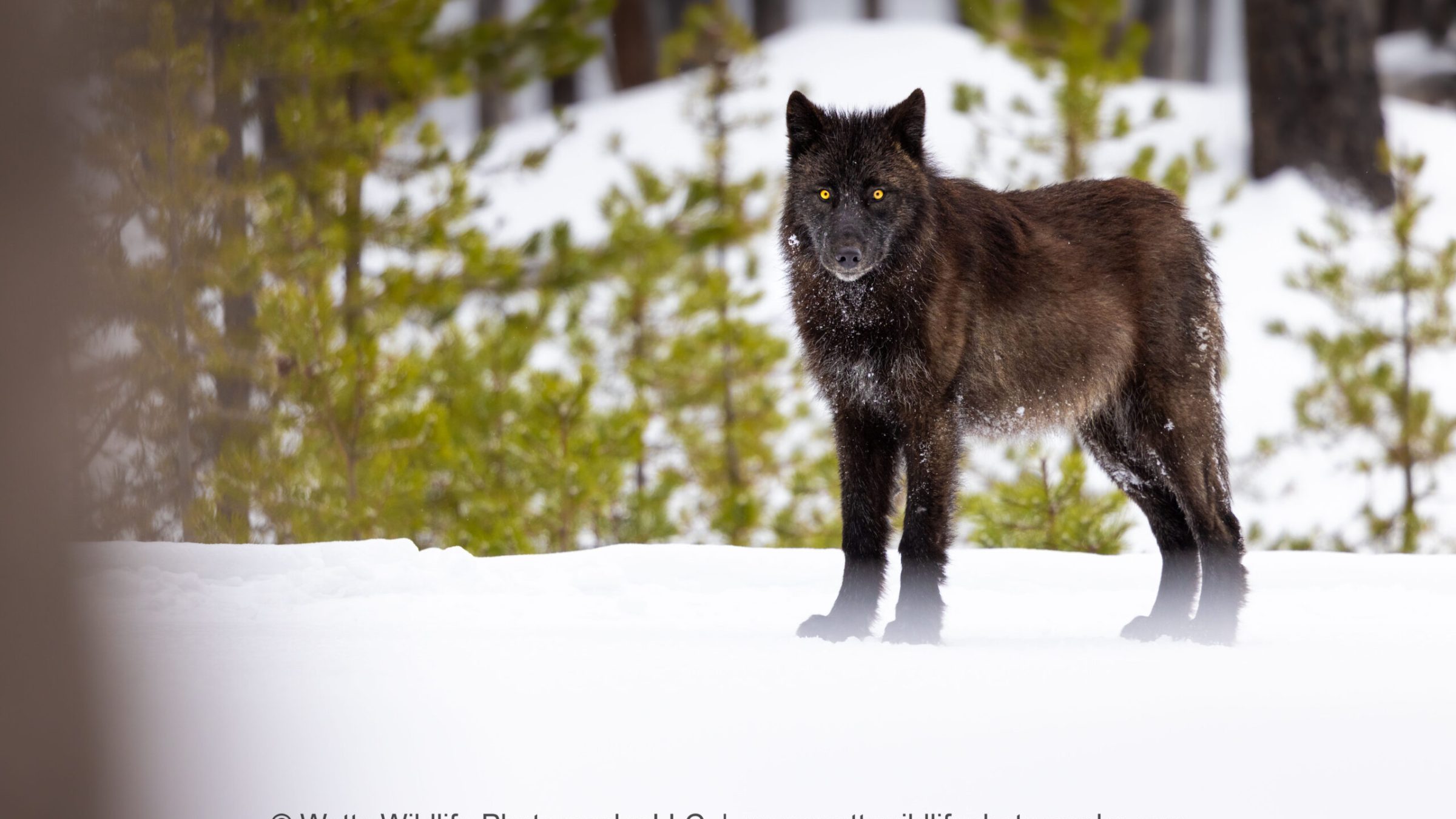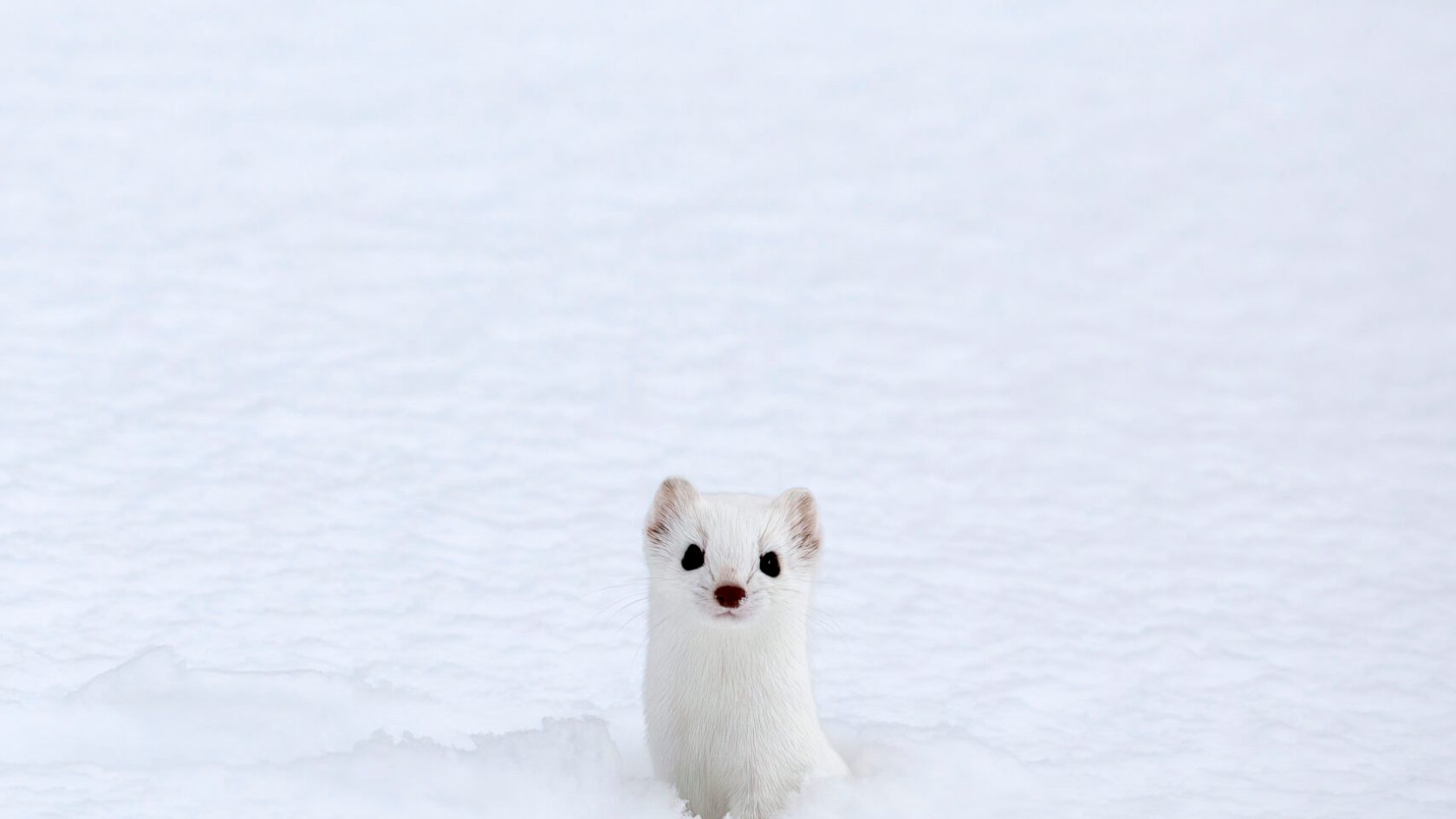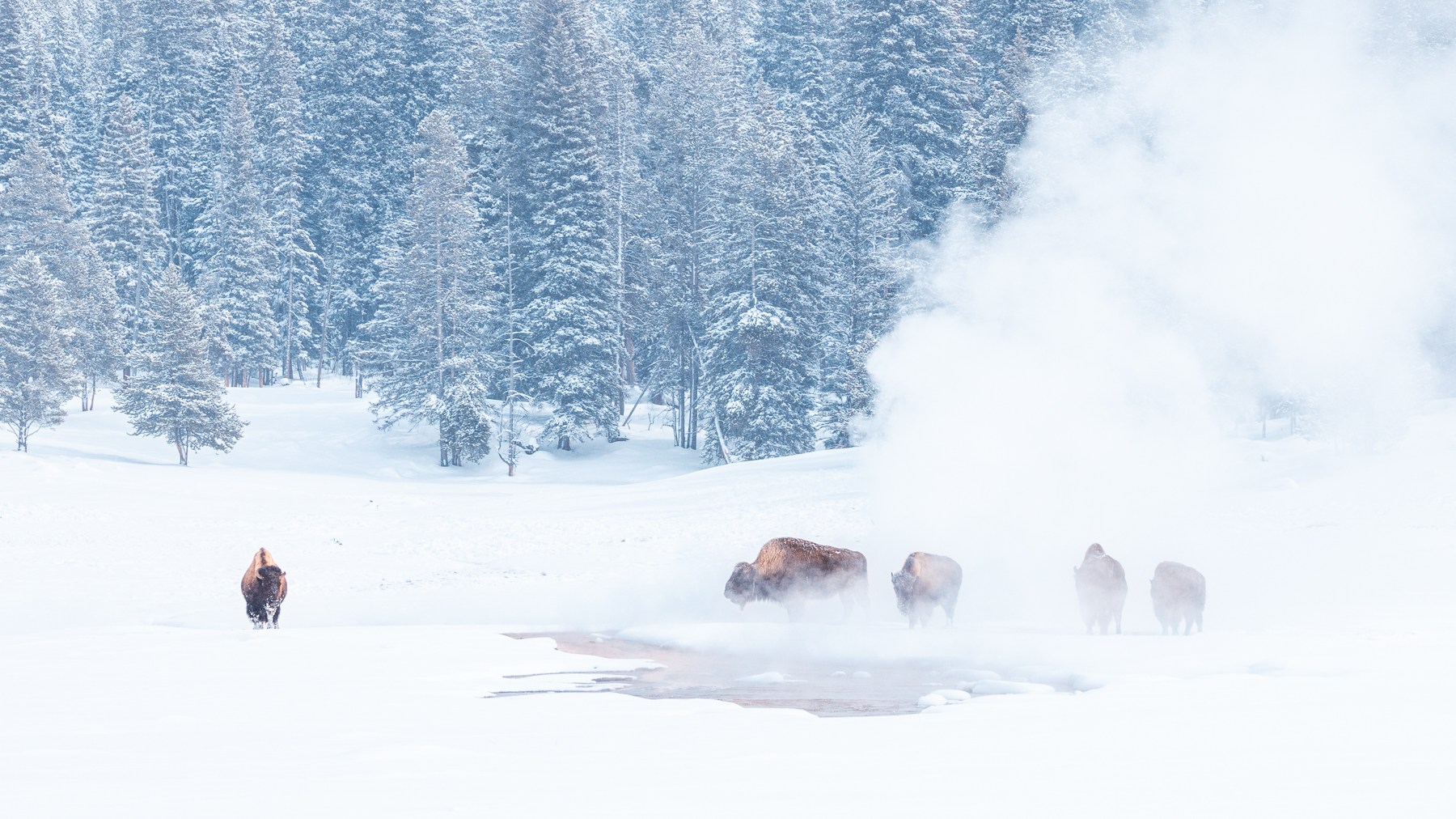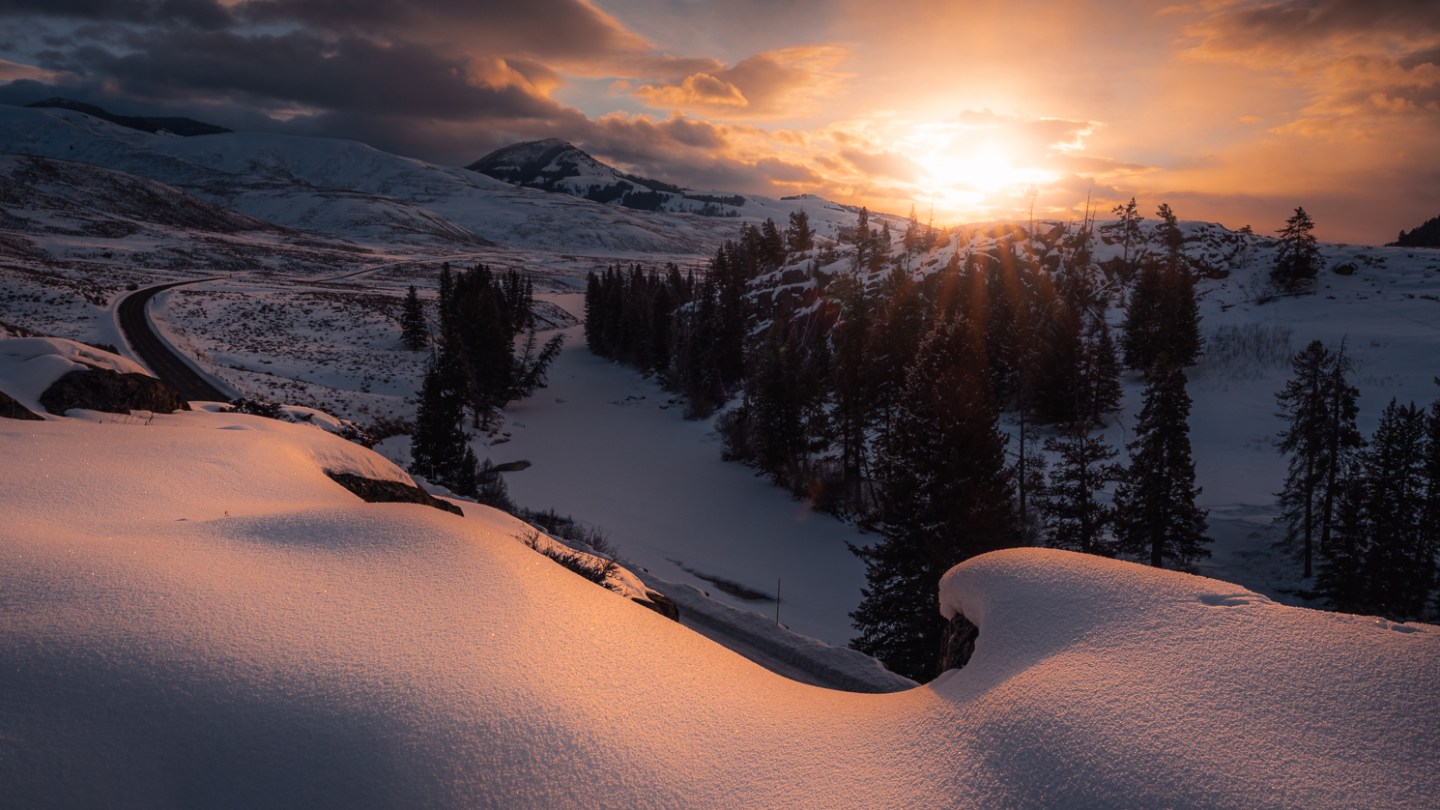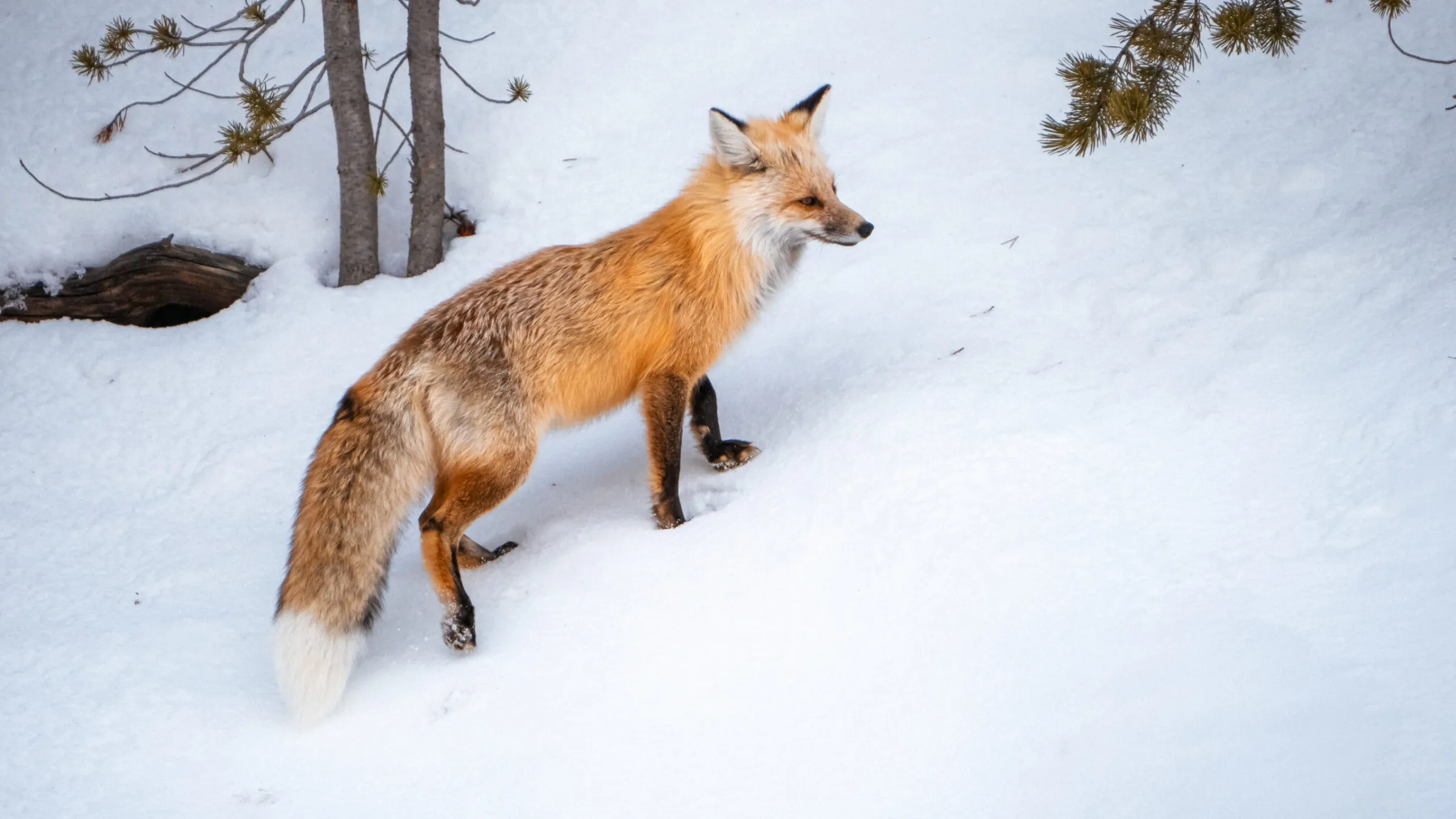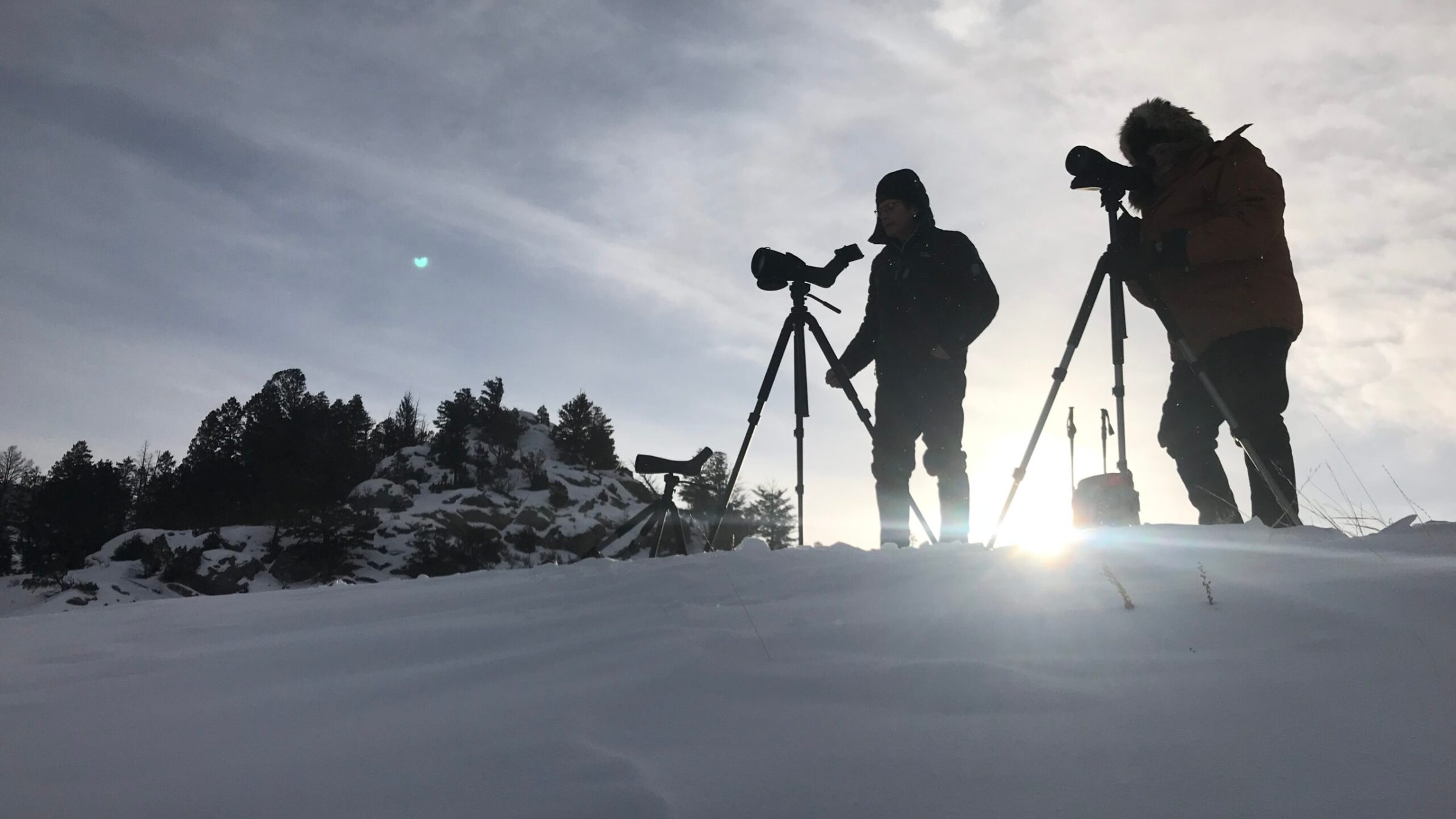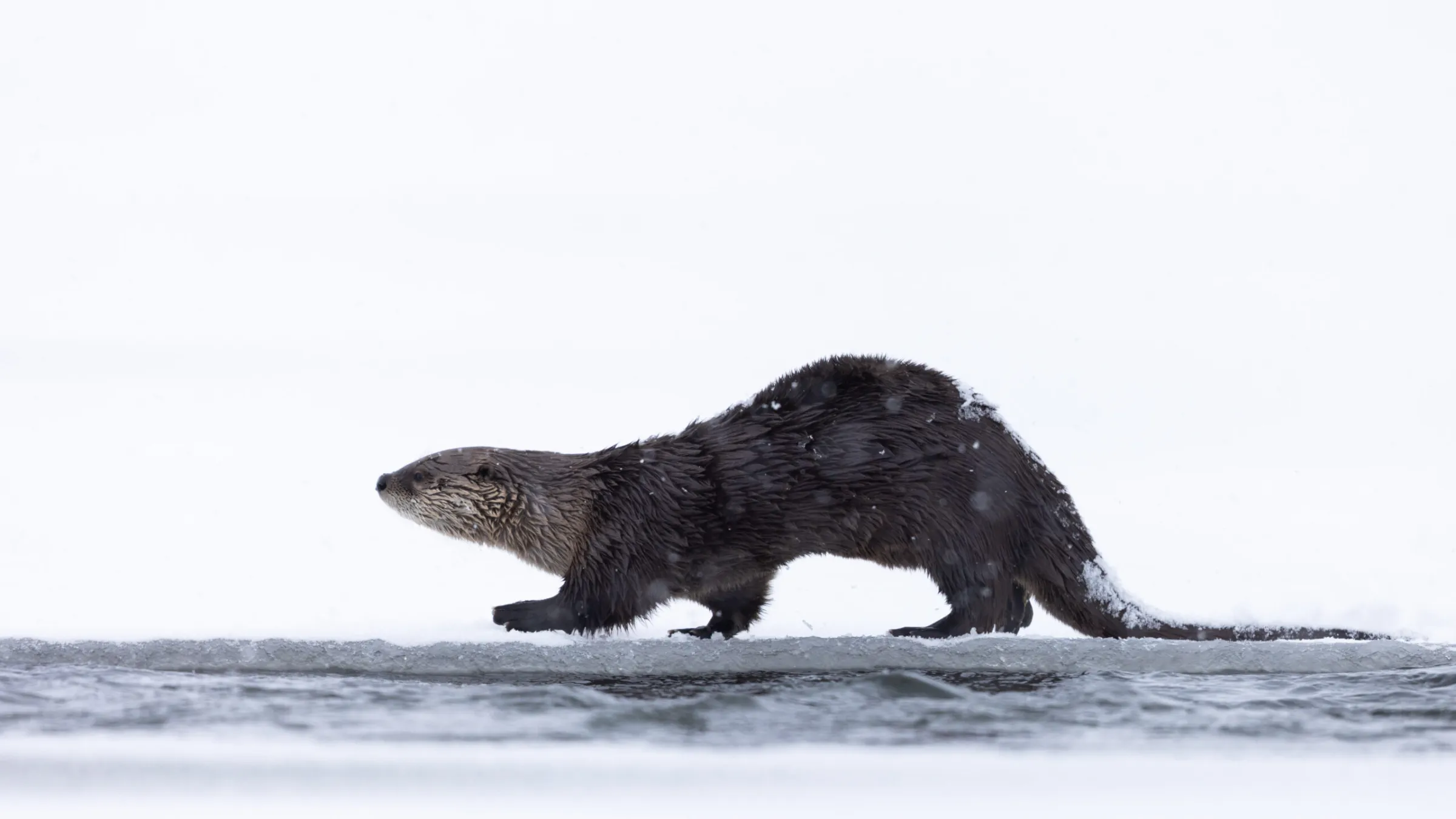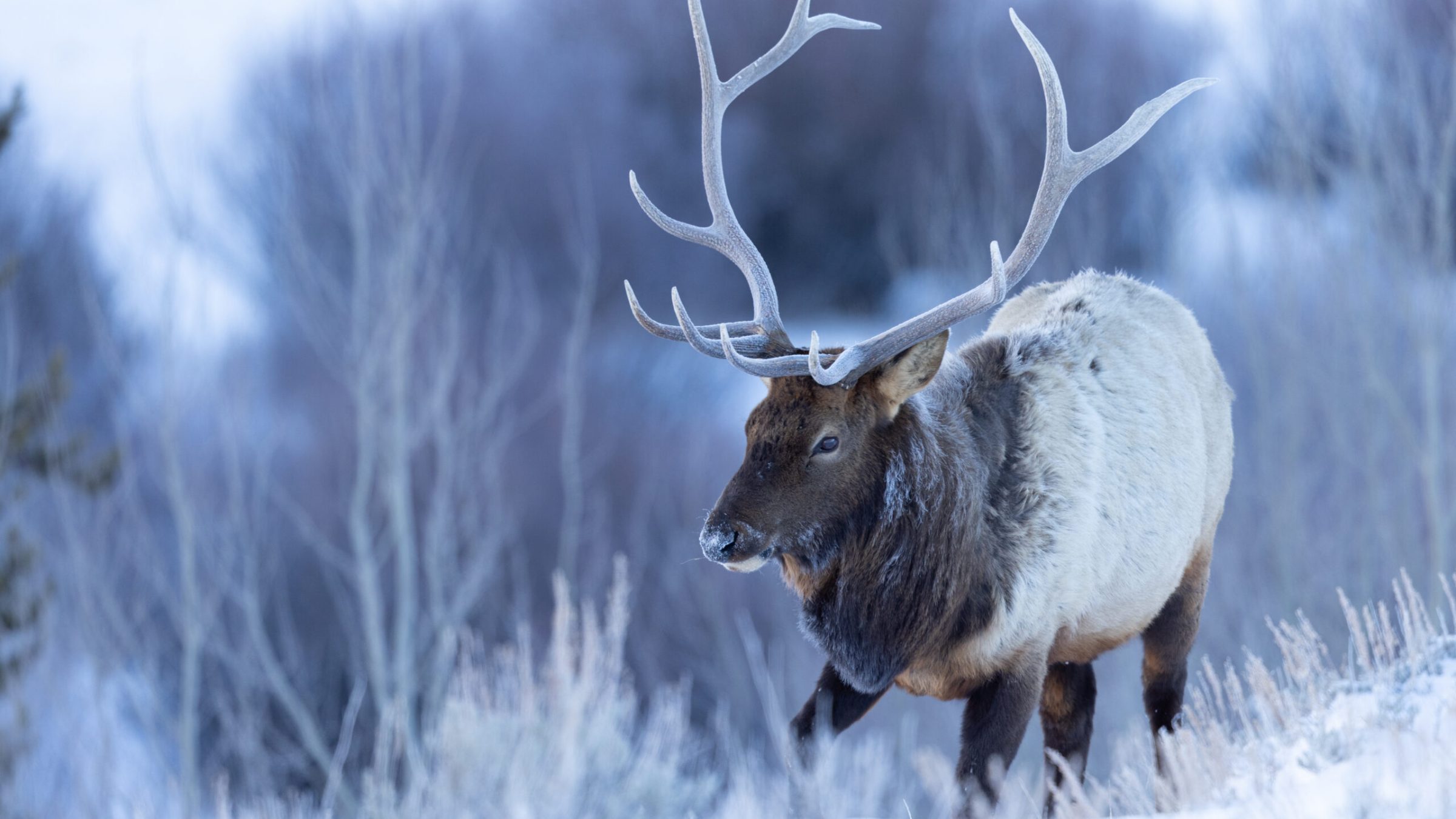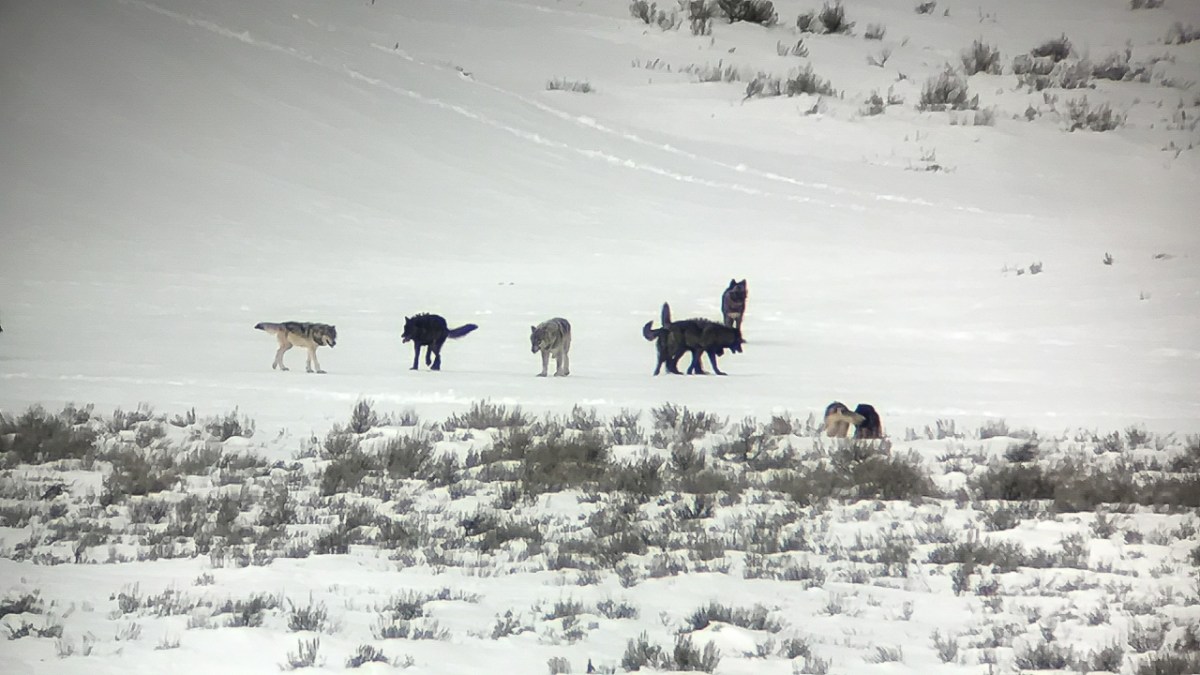We offer private, single-day, custom Yellowstone National Park winter tours, as well as all-inclusive multi-day packages, focusing on the wolves and other wildlife wintering on the Northern Range of Yellowstone National Park. To read more information about the wildlife in the park during winter, scroll to the informational section at the bottom of the page.
Learn more about Yellowstone's winter wildlife and landscapes
The deep snows of winter have pushed Yellowstone’s iconic wildlife down in an elevational migration into the wintering grounds of the Lamar Valley and lower Yellowstone Canyons. Thousands of elk and bison, along with moose, bighorn sheep, white-tailed and mule deer, and pronghorn have filtered out of the higher mountains of the Greater Yellowstone Ecosystem and have concentrated in the lower valleys and grasslands where winter is less extreme. Winter can be tough on these grazing animals, and partially because of that, this is when and where Yellowstone’s wolves and other carnivores thrive. This is the season of the wolves!
-
As soon as we enter the northern gate of Yellowstone National Park, wildlife viewing opportunities abound! The Gardiner Canyon immediately greets us as we start our ascent towards Mammoth Village. This canyon is home to the McMinn herd of Rocky Mountain big horn sheep, which overwinter in this lower elevation canyon. Come spring, they spread back out and fill in their high-mountain territories throughout the Greater Yellowstone Ecosystem. During November and December, the rams can be found among the herds competing for breeding rights. The cracking sound of their impressive skulls and horns crashing together can sometimes be heard for miles. Keep your eyes up on these steep canyon walls, as nowhere is out of reach for these climbing specialists.
Climbing our way to 6,200-foot elevation, we arrive at the historic park headquarters at Mammoth Hot Springs. Originally established as Fort Yellowstone by the U.S. Army in the late 1800s, Mammoth is most known for the exquisite beauty of the Mammoth Terraces. Large herds of elk spend their winter in and around Mammoth, often providing the up-close views that have given Mammoth the nickname of Elk Town.
Here we turn to the east and find ourselves climbing ever further up and eventually over the Blacktail Plateau. Our route parallels one that has been used for tens of thousands of years, not by humans but by Yellowstone’s prehistoric survivors, the American Plains bison. Buffalo, as named by early explorers and settlers, have traveled in the footsteps of their ancestors for millennia, heading towards the lower elevations of the Gardiner basin to escape winter’s relentless assault. Along this path, we often see family groups of bison heading west and downhill, appearing as natural and adept on the landscape as the very snow itself. It is humbling and inspiring to witness these timeless creatures carry out, and pass on to the next generation, the route of this ancient migration. The open vistas and windswept landscape of the Blacktail Plateau is as good as any place along the Northern Range to experience it.
Further toward the east, we have a couple massive vistas overlooking the confluence of Hellroaring Creek and the Yellowstone River, an area known simply as Hellroaring. From our pullout views here, it is easy to become overwhelmed by the scale, with the landscape first dropping away from your feet then dramatically rising again, leaving a beautifully soft and welcoming slope below — surely, an Ansel Adams-worthy landscape, but also a winter wildlife viewer’s delight! The lower elevations along the bottom of the slope and the edges of the Yellowstone River are a welcome refuge for the large migrators of Yellowstone. Elk and bison alike gather here, sometimes resting along their march or spending their entire winter season in the bottom of Hellroaring. This concentration of prey undoubtedly draws the attention of several wolf packs that annually travel into Hellroaring for this season, also looking for a meal. Your guides use their high-powered optics to find them!
Carrying on past the Tower Ranger Station, a beacon of human life dropped into the vast frozen wilderness, we cross the Yellowstone River, and approach Little America. This area of the park is unique for its glacial erratics, evidence of a time when ice and cold truly dominated the land some 20,000 years ago. But Little America isn’t just a playground of geologic history; it’s a wolf watcher’s dream. This area, 7 miles long and 3 miles wide, is home to some of Yellowstone’s best wolf habitats. With massive views in all directions, the opportunity to spot a wild wolf is as good here as anywhere. Wolves commonly travel the road during the dark winter nights, and with the only the vehicle’s headlights illuminating the road, an experienced guide can often pick up their tracks, determine their direction of travel, and often the number of individuals to search for. This is always an exciting moment, knowing the elusive apex predator is nearby, and it’s often in Little America.
Moving further to the east, we pass through the Lamar Canyon, a cascade of the Lamar River, over boulders, ice and toppled pines, and approach the destination most intrepid winter visitors of Yellowstone covet, the Lamar Valley.
A valley often likened to “driving into a postcard” or the “Little Serengeti”, never disappoints, regardless of the season, but there is a little extra magic during a Yellowstone winter. First noticed is the Lamar, snaking it way through the valley bottom, with meanders so beautiful and natural it reminds us what rivers a supposed to look like. Dots in the distance, first appearing as rocks, turn into frosted steam generators and eventually reveal themselves. Bull bison, in bachelor groups will stay in Lamar Valley all winter, leaving the cows, and younger bison to migrate to easier pastures. Are these bulls too stubborn to migrate? Or too strong to worry about the extreme cold and snow? Regardless, they appear perfectly adapted to wait out Old Man Winter.
This sacred valley was also the site of the first wolf tracks to be laid upon Yellowstone in 69 years. The first release of wolves into Yellowstone in 1995 was right here in Lamar Valley. Since, it has been dubbed “the valley of the wolves” because of its unique opportunities to view wild wolves, living truly wild lives. It was called home by the park’s most famous, and maybe the world’s most famous wolf pack: the Druid Peak Pack, who reached its peak in 2001 with 37 members. Currently, the Junction Butte pack, and the Lamar Canyon pack both use the valley to hunt, and raise their young. When it comes to wolves in the Lamar, perhaps the most impressive wolf sightings, photographs, films and scientific research of all time have occurred right here in Lamar Valley, and everyday something new and memorable happens.
The Lamar Valley is also home to many other creatures, large and small. Golden Eagles can sometimes be seen hunting their favorite winter meal, Golden-eye Ducks along the Lamar River. Otters frequent openings along the ice-shelved river as well, always wary of trout stealing Bald Eagles. Foxes and Coyotes use the mid-day hours to hunt, when the snow is softest, and their diving plunge through it is most rewarding. We never know what may be around the next bend or coming over the ridge, but we do know, there’s always something amazing happening in the Lamar; it’s just a matter of finding it!
Moving along the northern bank of the Lamar River, past the confluence with Soda Butte Creek, we transition into the Soda Butte Valley. Here the landscape changes, from the vast expanses of the Lamar to a tighter and more dramatic section of the Northern Range. Soda Butte Creek is lined with willows, hiding the valley bottom, and therefore creating textbook habitat for another one of Yellowstone’s mega fauna: Moose. Winter is the perfect season to find these gangly, yet somehow majestic browsers. Harsh temperatures and deeps snow have pushed them to the valley floor, and often into view if you know where to look. Fortunately, we do!
We will spend the day exploring the wonders of the Northern Range: a variety and density of wildlife unmatched by anywhere else in North America, breathtaking vistas, and a natural and human history rivaling a story stranger than fiction. With the restoration of wolves and their subsequent impacts on the ecosystem, known as “trophic cascades”, Yellowstone’s Northern Range now holds all of its original species and ecological components, and scientists declare it to be every bit as wild and healthy right now as it’s ever been! The Northern Range has become a world-class destination for wildlife viewing, and immersing yourself in a truly wild ecosystem and the beauty of winter will only enhance everything you’ve come for!


